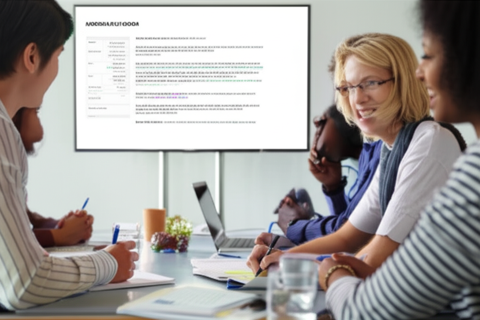Soft Skills That Are Hard to Ignore: Why They Matter More Than Ever
In today's rapidly evolving world, technical skills are no longer enough to guarantee success. While hard skills are essential for performing specific tasks, soft skills are the crucial interpersonal and intrapersonal abilities that drive success in any field. These skills, often overlooked, are becoming increasingly important for career advancement and overall well-being. This blog post will delve into the significance of soft skills and explore why they matter more than ever.
What are soft skills? Soft skills are personal attributes that enable someone to interact effectively and harmoniously with other people. They're the traits that make you a good team player, a strong communicator, and an effective leader. Examples include communication, teamwork, problem-solving, critical thinking, time management, and adaptability. These skills are transferable across various industries and roles, making them highly valuable.
Why are soft skills more important now than ever? The modern workplace is dynamic and collaborative. Teams are increasingly diverse and geographically dispersed, requiring individuals to communicate and collaborate effectively across different cultures and time zones. Technological advancements, while enhancing productivity, have also increased the need for strong communication and interpersonal skills to manage and interpret data effectively. Automation is rapidly changing job roles, making adaptability and continuous learning essential for staying relevant. Finally, the demand for strong problem-solving and critical-thinking skills is higher than ever, as businesses face more complex challenges in today's globalized environment.
Examples of crucial soft skills:
- Communication: This encompasses both verbal and written communication, active listening, and clear articulation of ideas. Effective communication is the bedrock of any successful interaction, from team meetings to client presentations.
- Teamwork: Collaboration is key in today's workplace. Teamwork skills involve cooperation, mutual respect, and the ability to contribute effectively within a team setting.
- Problem-solving: The ability to identify, analyze, and resolve problems creatively is highly sought after. It involves critical thinking, analytical skills, and the ability to develop effective solutions.
- Adaptability: The business landscape is constantly changing. Adaptable individuals can easily adjust to new situations, learn new technologies, and embrace change with flexibility.
- Time Management: Effectively managing time and prioritizing tasks is crucial for productivity and meeting deadlines consistently. It involves planning, organization, and self-discipline.
- Leadership: Leading teams effectively involves inspiring, motivating, and guiding others towards a common goal. It requires strong communication, empathy, and decision-making skills.
- Critical Thinking: This skill involves analyzing information objectively, identifying biases, and forming reasoned judgments. It's essential for making informed decisions and solving complex problems.
- Creativity and Innovation: In a competitive landscape, organizations need creative individuals who can come up with novel solutions and improve existing processes.
- Emotional Intelligence: Understanding and managing emotions, both one's own and others', is critical for building strong relationships, resolving conflicts, and fostering a positive work environment.
How to improve your soft skills:
Improving soft skills is an ongoing process that requires self-awareness, continuous learning, and deliberate practice. Here are a few key strategies:
- Seek feedback: Actively solicit feedback from colleagues, supervisors, and mentors. This helps you identify areas for improvement and track your progress.
- Take courses and workshops: Numerous online and in-person courses can enhance various soft skills, such as communication, leadership, and teamwork.
- Read books and articles: Expand your knowledge by reading about effective communication, leadership, and other relevant topics.
- Practice actively: The best way to improve soft skills is to practice them regularly in real-life situations. Volunteer for leadership roles, participate in team projects, and actively engage in communication opportunities.
- Reflect and learn from mistakes: Every experience is a learning opportunity. Reflect on your interactions and identify areas where you can improve your skills. Don't be afraid to make mistakes; they're part of the learning process.
Conclusion:
In a world increasingly driven by technology and automation, soft skills are becoming even more crucial for success. They are the essential human elements that differentiate individuals and drive progress within teams and organizations. By actively cultivating and improving your soft skills, you can enhance your career prospects, improve your relationships, and increase your overall well-being.
